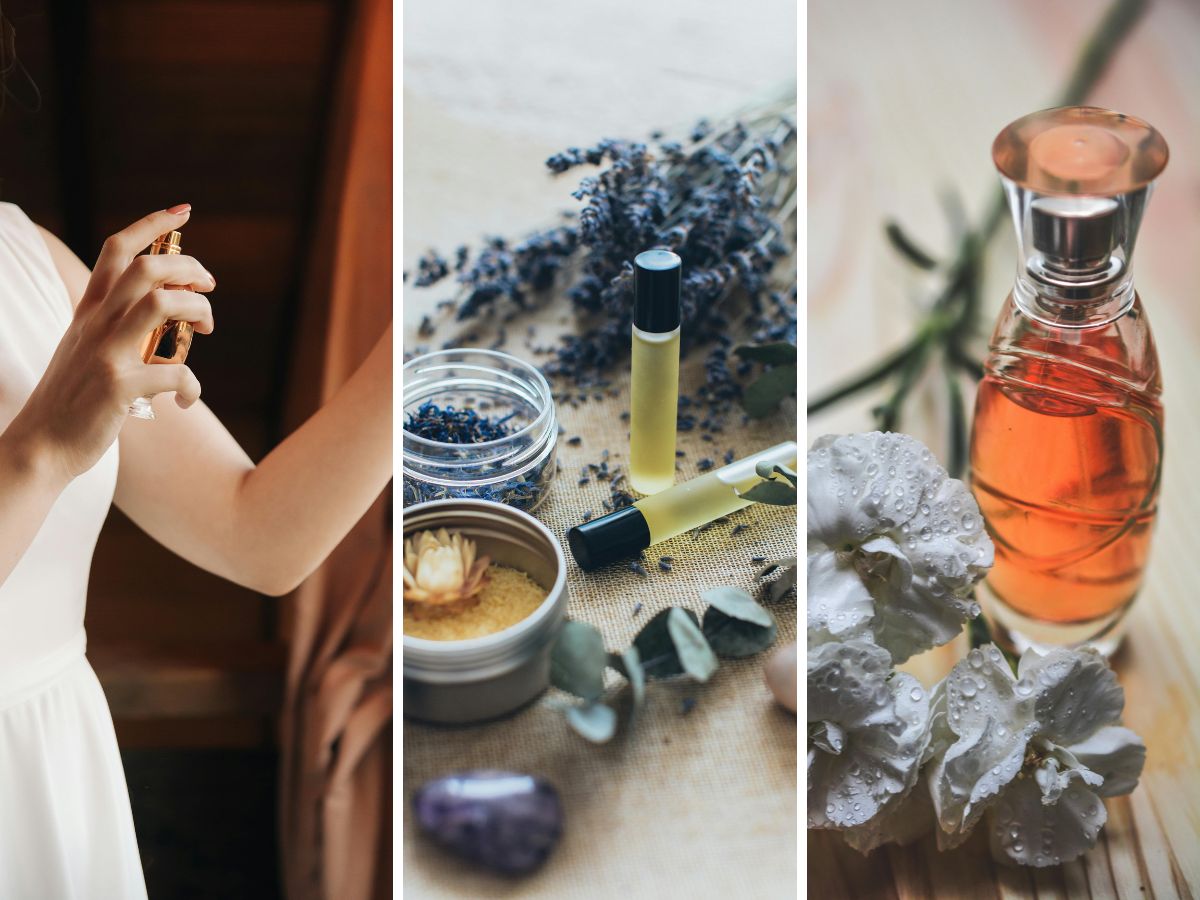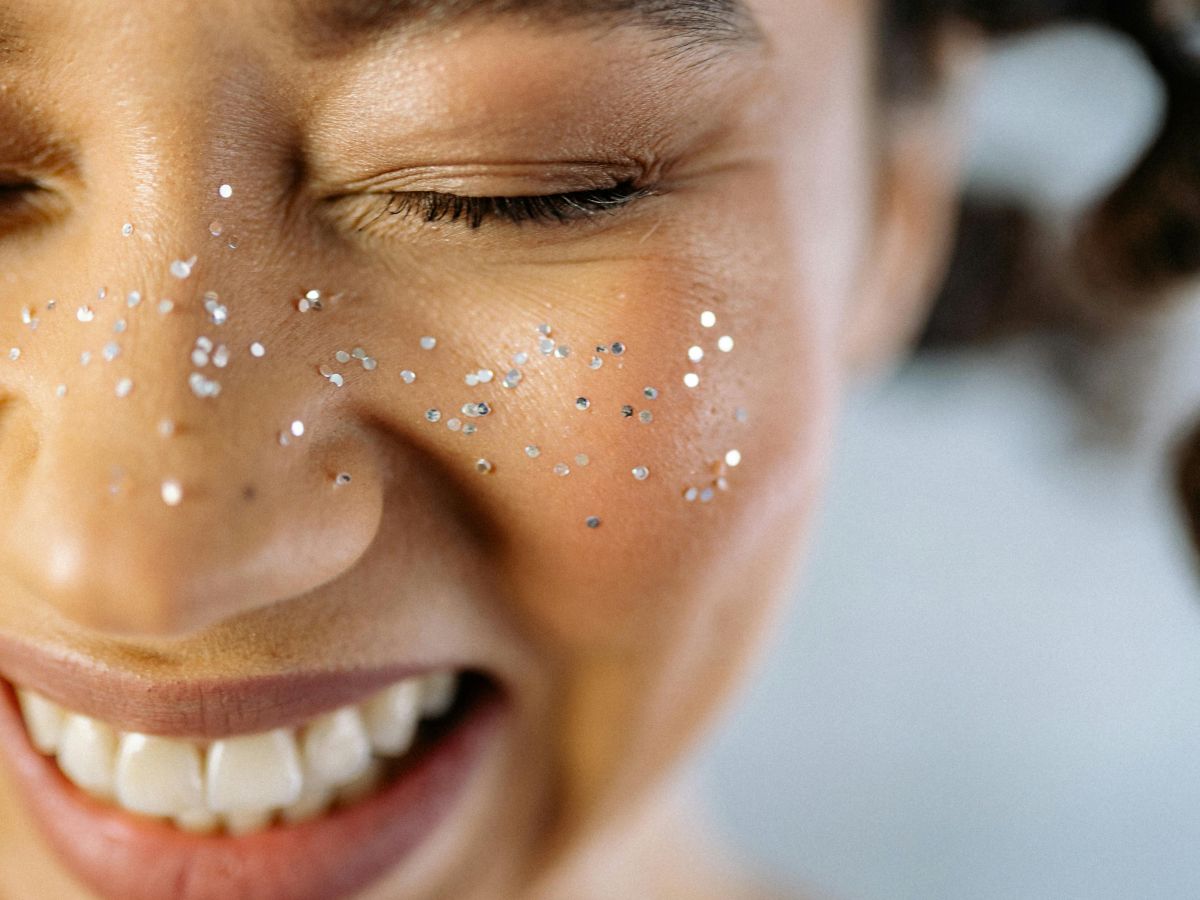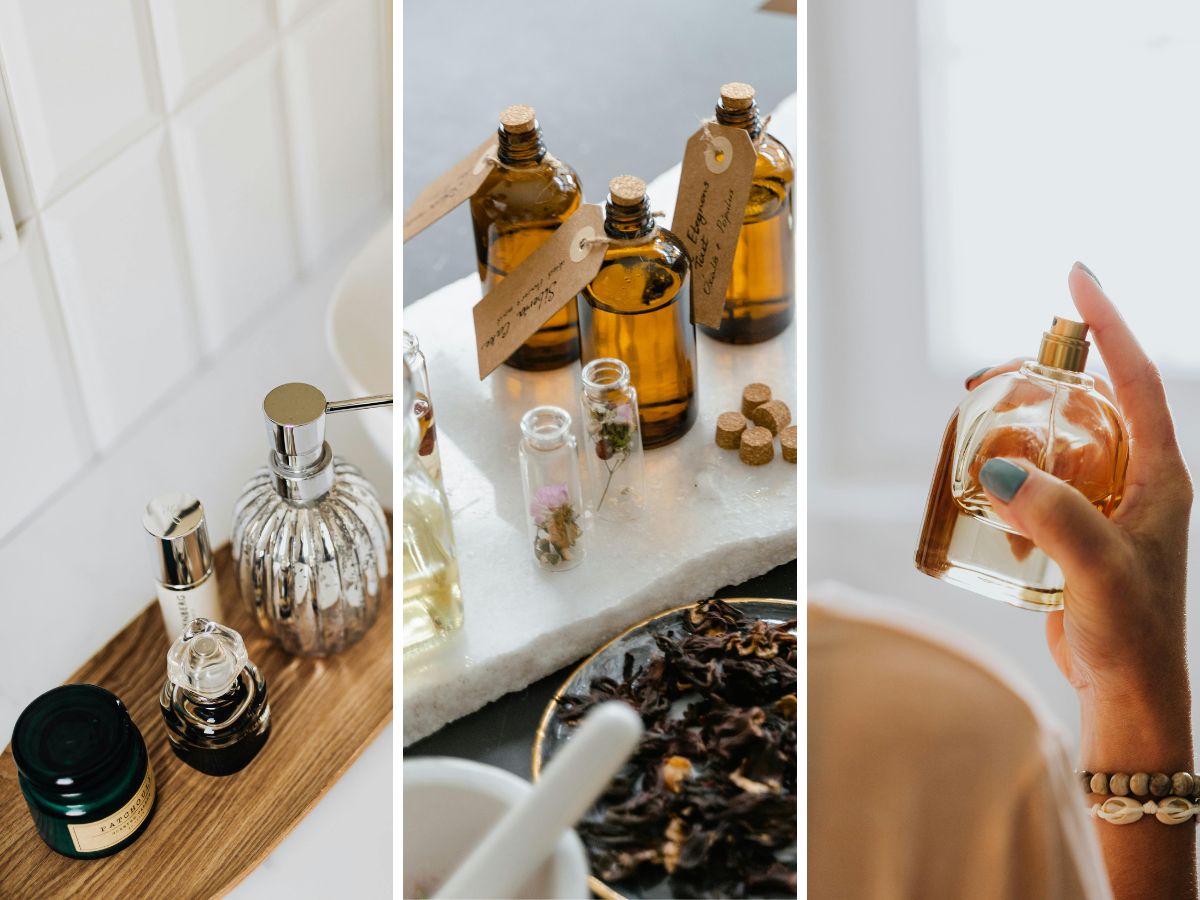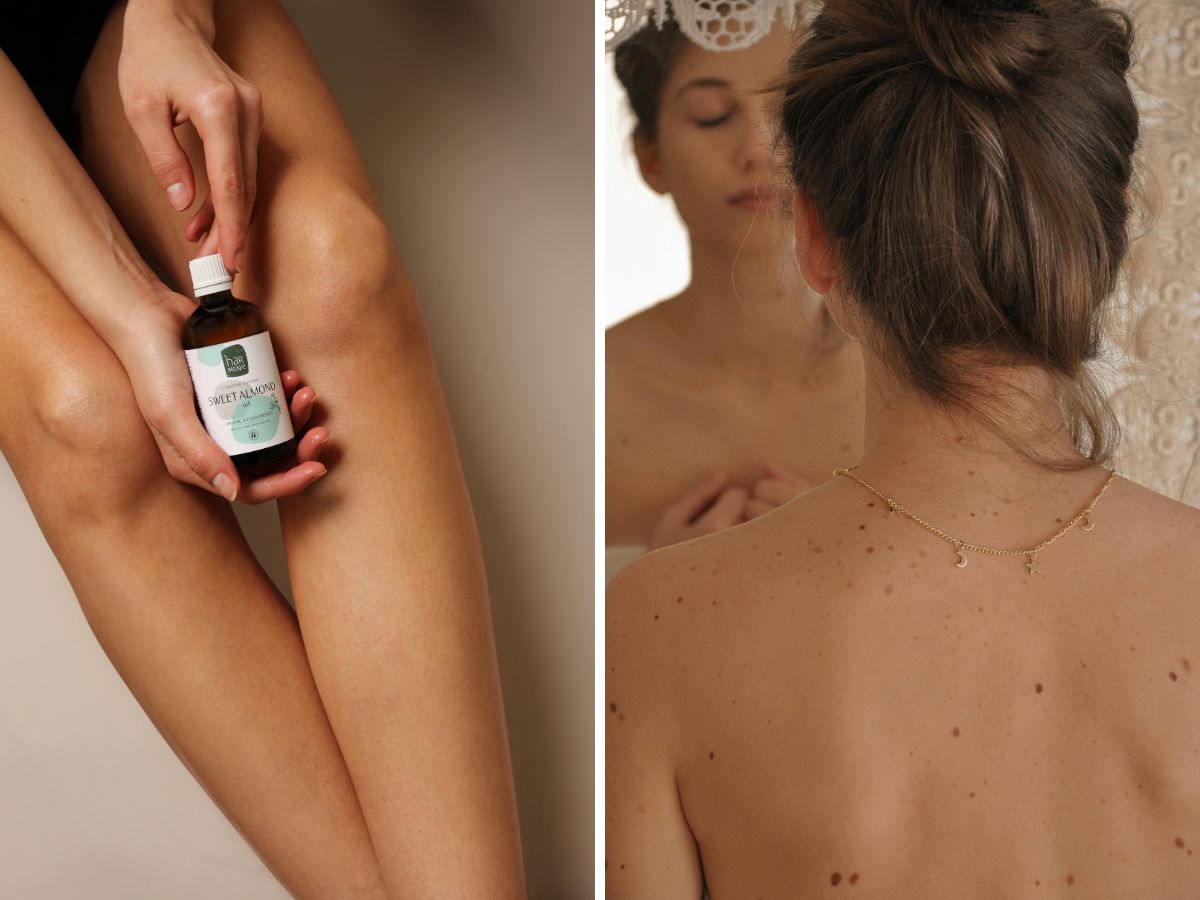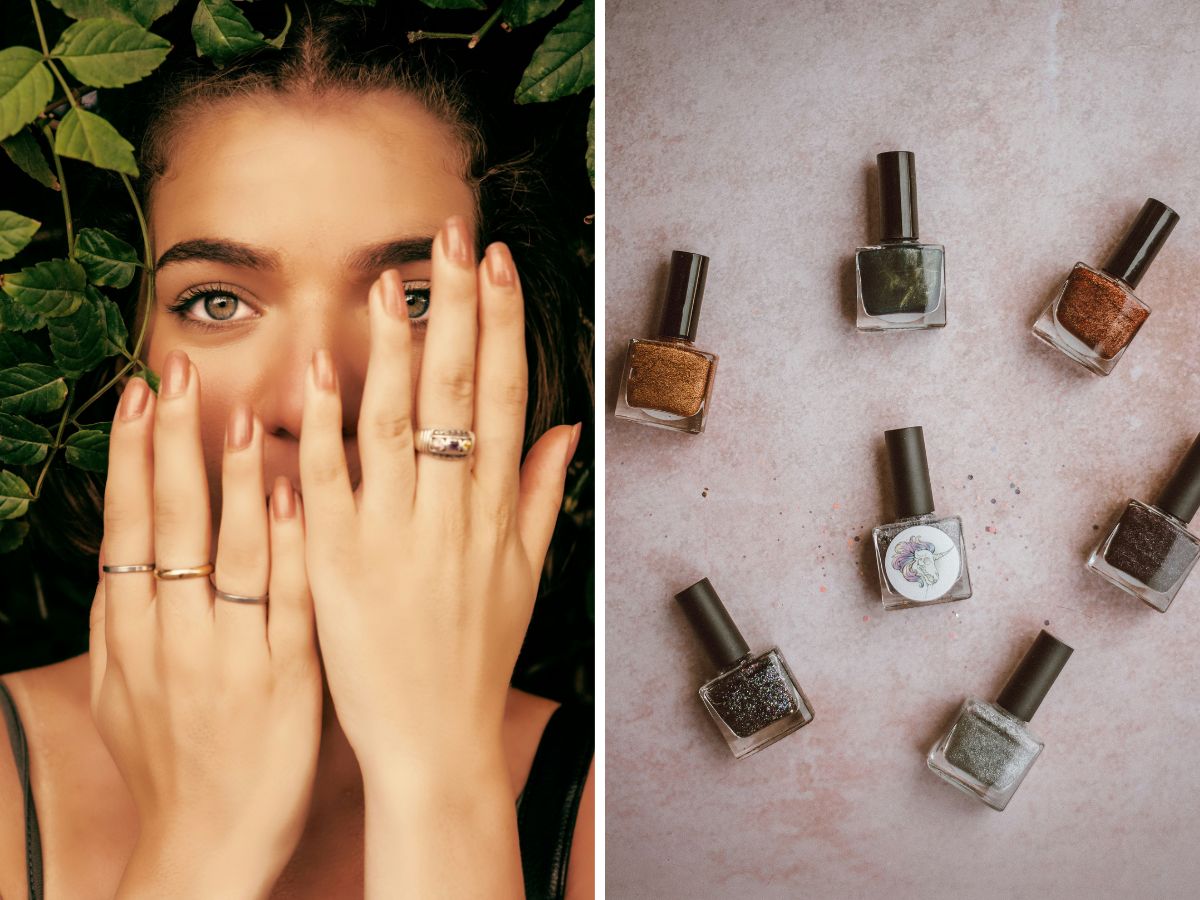We often spray it on without thinking about it: perfume! But what is that nice fragrance actually made of? And how ‘tasty’ is it really? While we increasingly check the ingredients list for food and cosmetics, we often skip perfume. In fact, you often can't even check it! Unlike other personal care products, manufacturers don't even have to put the ingredients on the packaging. Say what! Yes, that's pretty crazy. We think so too. But because we do want to smell good without sacrificing our planet - or our health - we dive into that perfume bottle. What exactly is the smell of perfume? And is there such a thing as sustainable perfume?
What exactly is in perfume?
Everyone knows them: the sultry perfume advertisements of luxury fashion brands. Chances are there is also a bottle of this expensive liquid on your make-up table at home. Such a fragrance smells wonderful and gives an instant feeling of freshness. But if you knew what ingredients are in most perfumes, that ‘fresh’ feeling would quickly fade. The Tegengif Foundation, together with the Danish Consumers' Association and the Belgian foundation Kom op tegen Kanker, twenty popular perfumes examined and in the process discovered as many as 26 different ‘problematic chemicals’. We'll spare you the complicated names. These substances are not only harmful to the environment, but can also cause allergies, disrupt hormones and even reduce fertility. Oy. And to think that you not only spray perfume on your skin, but also inhale it and leave it on others - for example, when you give your baby or grandma a hug.
An expensive poison cloud?
So we often have no idea what substances are in perfume, let alone whether any of those 26 ‘problematic chemicals’ are in it. And that is exactly the problem. ‘Perfume’ sounds fancy, but it is actually a complex mix of countless ingredients. And although cosmetics brands are obliged by EU law to list ingredients, this obligation does not apply to fragrances. Only a handful must be listed, the rest remain a mystery. This makes it difficult to make an informed choice. And fragrances are not only in perfume, but also in detergent, shampoo, make-up and cleaning products. All those fragrances accumulate - in our bodies and in nature. Time to look for a more sustainable alternative. Spoiler: we found them!


Since the ingredients of perfume, unlike other cosmetics, do not have to be listed on the packaging, you often do not know exactly what that yummy fragrance is made of.
So many kinds of fragrances, which is the best?
In perfumery, the choice is vast. Besides the many brands and fragrances, you will also come across different types in the perfume department: perfume, eau de parfum, eau de toilette and eau de cologne. But do you know the difference? The Bijenkorf website tells us the following about the percentages of fragrance ingredients. Perfume contains the most fragrances (20% to 40%), which means the scent lingers the longest. Convenient, but that also means you spray on the highest concentration of unknown substances. Eau de parfum is slightly lighter (10% to 20%) and therefore does not linger as long. Eau de toilette (5% to 10%) is even fresher and therefore ideal for daytime wear. The lightest variant is eau de cologne (2% to 5%) and contains the least fragrance concentration. Do you spray the same amount every day? Then eau de cologne is the best choice, as it contains less (unknown) fragrance.
Labels for sustainable perfume
A life-saver in choosing a better perfume are labels. There are good labels for cosmetics - including perfumes - that guarantee that the ingredients are natural and have been obtained in an environmentally friendly way. This is an important nuance, because even natural ingredients can be obtained through very intensive farming and therefore not be sustainable. Indeed, in that case an ingredient of synthetic origin may even be a better choice. Good labels for perfumes are EU Ecolabel, COSMOS Organic, NATRUE Organic and the Nordic Swan Ecolabel. Then you know for sure that a fragrance contains natural ingredients and that those ingredients have been obtained in an environmentally friendly way. Not sure if a label on a pack is reliable? Then check the Label guide from Milieu Centraal.
Note 1: Even natural ingredients can cause skin irritations. You don't remove that risk with a more eco-friendly choice, although some blogs claim that you do.
Note 2: Almost all perfumes, including sustainable perfumes, contain alcohol, usually ethanol from sugar cane or grains. This dissolves fragrances, ensures good diffusion and extends shelf life, but production can be burdensome due to land use, water consumption and CO2 emissions.
Why is perfume not always vegan or animal-tested?
So choosing less mysterious ingredients is the sustainable tip, but quite difficult to implement in practice, as ingredients are often not listed on the packaging. So we dive a little deeper into the perfume bottle - the bottom is almost in sight! After all, you can also consciously choose a vegan or animal-tested perfume. There are handy labels for that, we'll come to that in a moment. You might not expect it, but some perfumes contain animal ingredients, such as extracts from beavers, sperm whales and deer. Bizarre, but really true! Fortunately, some of these substances have now been banned, but that doesn't mean that all perfumes are automatically vegan or cruelty-free. Want to know more about this? Then check out this article on why perfume is not always vegan. Here we also take a closer look at the (headache) issue of ‘animal testing in cosmetics’. Because yes, that is banned in Europe, but that does not mean it is completely off the table.
Want a vegan perfume or a fragrance that is definitely vegan and cruelty-free? Then pay attention to these labels: PETA-Approved Vegan, the green and white sunflower of The Vegan Society, the yellow-green label of V-Label and the certified vegan black heart of vegan.org. Perfume that is cruelty-free can be recognised by the labels of PETA-Approved or Leaping Bunny. You can also look up for yourself whether a brand is cruelty-free on PETA's website.


Sustainable perfume from Dutch brand Lingua Planta based on plant-based ingredients. Photos: Angela Blumen & Juna Amsler.
Sustainable perfume: a handy list
To sum up: ideally, we want a perfume that is vegan, cruelty-free and free of harmful substances. Does this exist? And if so, where can you find it? We won't keep you in suspense any longer: better perfumes exist. To save you the search, we have already made a list for you of brands that sell sustainable fragrances. Oh, you are going to be so happy with us for Mother's Day, the holidays and your grandmother's birthday in the years to come.
- At the Dutch brand Lingua Planta they use only carefully selected, natural, plant-based ingredients for their perfumes that are also animal-tested free.
- RUIK is another Dutch brand that makes perfumes from waste, such as orange peels or discarded Christmas trees. Ruik's perfumes are free of parabens and solvents. It is also vegan and cruelty-free.
- The French brand Douces Angevines has budget-friendly eau de toilettes that are COSMOS Organic-certified, vegan and, according to PETA, also cruelty-free. Top.
- The perfumes of the Swiss brand Farfalla are NATRUE Organic-certified and vegan.
- The French brands Acorelle, Florame and Fleurance have perfumes that are COSMOS Organic-certified and vegan. These brands are also quite affordable.
- Besides the well-known perfume in a bottle, there is also solid perfume (in block form). The French brand Lamazuna has solid perfumes that are COSMOS Organic-certified and vegan. According to PETA, Lamazuna is also cruelty-free. This is not only a sustainable, but also a budget-friendly tip.
- The Spanish brand Banbu has solid perfumes that are COSMOS Organic-certified, vegan and PETA animal-test-free-certified.


Dutch company RUIK makes sustainable, vegan perfumes from orange peels and other waste streams.
Perfume storage and recycling
We talk about choosing new perfume all the time now. But just as important is storing perfume properly - and not spraying on too much. Perfumes are best stored in a cool, dark and dry place. Not in the bathroom. Also make sure you seal the bottle properly. Is your perfume finished? Then simply throw the bottle (including cap!) in the bottle bank for recycling.
Sources: Santé, Milieu Centraal
Will you choose a sustainable perfume from now on?
Well, so an expensive fragrance does not automatically mean it is also expensivesane is. Many well-known perfumes are full of ingredients that are not only bad for the environment, but may not be the best choice for our health either. If you, too, no longer feel like spraying that stench on your skin or in the air, choose a more sustainable alternative the next time you need a new perfume or give it as a gift. These days, there are plenty of perfumes that don't have a foul smell.
More sustainable beauty tips
- Also useful against unpleasant odours: long-lasting deodorant.
- Something almost all of us use: what's wrong with shampoo and how do you find sustainable shampoo?
- What about mascara anyway? We wanted to know exactly what is in it and whether there is sustainable mascara.
Sources: Antidote, Radar, Box office, Soul Stores, The Green Guide, Elle. Photo credits: main image left: Jonathan Borba (Pexels), centre: Elly Fairytale (Pexels), right: Pixabay (Pexels), cosmetics and perfume with hand: Karolina Grabowska (Pexels), Merle Lingua Planta: Angela Blumen, perfume Lingua Planta: Juna Amsler, photos RUIK: RUIK.

